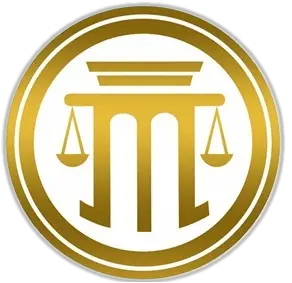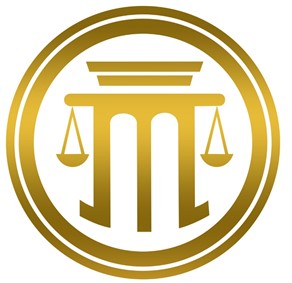To start, we need to determine when it is proper to consider an act or omission as a crime. The simplest answer is that it is a crime when there is a law that considers it as a crime. For the question at hand, coercion is a crime because there is a law that considers it so.
The applicable law that explicitly penalizes coercion is the Revised Penal Code. Under Section 3 (Threats and Coercion) of Chapter 2 (Crimes against Security), of Title 9 (Crimes Against Personal Liberty and Security), there are four Articles that discuss coercion as a crime.
Let us take a look at the specific provisions on Coercion under the Revised Penal Code:1
Section Three. – Threats and Coercion
“Article 286. Grave coercions. – The penalty of prision correccional and a fine not exceeding One hundred thousand pesos (P100,000)2 shall be imposed upon any person who, without any authority of law, shall, by means of violence, threats or intimidation, prevent another from doing something not prohibited by law, or compel him to do something against his will, whether it be right or wrong.3
“If the coercion be committed in violation of the exercise of the right of suffrage, or for the purpose of compelling another to perform any religious act, to prevent him from exercising such right or from so doing such act, the penalty next higher in degree shall be imposed. (Republic Act No. 7890, [February 20, 1995])”4
“Article 287. Light coercions. – Any person who, by means of violence, shall seize anything belonging to his debtor for the purpose of applying the same to the payment of the debt, shall suffer the penalty of arresto mayor in its minimum period and a fine equivalent to the value of the thing, but in no case less than Fifteen thousand pesos5 (P15,000).
“Any other coercions or unjust vexations shall be punished by arresto menor or a fine ranging from One thousand pesos (P1,000) to Forty thousand pesos (P40,000),6 or both.”
“Article 288. Other similar coercions; (Compulsory purchase of merchandise and payment of wages by means of tokens.) – The penalty of arresto mayor or a fine ranging from Forty thousand pesos (P40,000) to One hundred thousand pesos (P100,000),7 or both, shall be imposed upon any person, agent or officer, of any association or corporation who shall force or compel, directly or indirectly, or shall knowingly permit any laborer or employee employed by him or by such firm or corporation to be forced or compelled, to purchase merchandise or commodities of any kind.8
“The same penalties shall be imposed upon any person who shall pay the wages due a laborer or employee employed by him, by means of tokens or objects other than the legal tender currency of the laborer or employee.”3
“Article 289. Formation, maintenance and prohibition of combination of capital or labor through violence or threats. – The penalty of arresto mayor and a fine not exceeding Sixty thousand pesos (P60,000)9 shall be imposed upon any person who, for the purpose of organizing, maintaining or preventing coalitions or capital or labor, strike of laborers or lock-out of employees, shall employ violence or threats in such a degree as to compel or force the laborers or employers in the free and legal exercise of their industry or work, if the act shall not constitute a more serious offense in accordance with the provisions of this Code.”8
What are the kinds of coercions?
Now, let us discuss the different kinds of coercion as provided under the Revised Penal Code.
First is grave coercion, as provided under Article 286.10 Grave coercion is committed by “any person who, without any authority of law, shall, by means of violence, threats or intimidation, prevent another from doing something not prohibited by law, or compel him to do something against his will, whether it be right or wrong.”
Second is light coercion, as provided under Article 287.10 Light coercion under Article 287 seems to have two definitions or qualifications.
1] One, light coercion is committed by “[a]ny person who, by means of violence, shall seize anything belonging to his debtor for the purpose of applying the same to the payment of the debt.”11
2] Next, Article 287 likewise penalizes “[a]ny other coercions or unjust vexations.”11 This second type encompasses a lot of situations, and it is often referred to by professors as the “crime of last resort” because it seems like it can be applied at any situation. We will get into the details and examples in the succeeding sections of this article.
Third refers to “other similar coercions,” as provided under Article 288. Other similar coercions may be committed by “any person, agent or officer, of any association or corporation who shall force or compel, directly or indirectly, or shall knowingly permit any laborer or employee employed by him or by such firm or corporation to be forced or compelled, to purchase merchandise or commodities of any kind.”10
What are examples of coercion?
Let us discuss examples of each kind of coercion in order to examine them more carefully.
As for grave coercion, it may be committed when a person coerces someone to do something when in fact, he does not have the authority to do so.
For example, if Person A forces Person B to vacate a certain property even though he does not have the title or ownership to such property, or if he is not a lawful officer that has the authority to effect demolition over aforementioned property, he is committing grave coercion against Person B.
As for light coercion, it may be committed by a creditor who forcibly takes away something that belongs to his debtor for the purpose of considering it as debt payment.
For instance, Creditor A loaned PhP100,000 to Debtor A as the latter needed the money to finance his food business. Due to the lockdowns caused by COVID-19, sales revenue and customer count both decreased. This caused Debtor A to default on his obligation which was supposed to be paid in installments. Creditor A did not approve all of the requests for extension by Debtor A. After the failed negotiations, Creditor A went to the food store of Debtor A without the consent of the latter, taking away equipment and other machinery to compensate for the delayed payments by Debtor A. In this case, Creditor A is committing light coercion against Debtor A.
Unjust vexation, which is also provided under Article 287, is a notorious one. While the Revise Penal Code did not specify what acts or omissions may be considered as unjust vexation, it has been discussed by several jurisprudence. In the case of Melchor G. Maderazo, et al. vs People of the Philippines,12 it is discussed that:
“[t]he second paragraph of Article 287 is broad enough to include any human conduct which, although not productive of some physical or material harm, could unjustifiably annoy or vex an innocent person.” But of course, this does not mean that someone can already file a case against you because he is annoyed by your mere presence. There has to be a positive act that produces such annoyance or distress to a person’s mind.13
Is Coercion a legal defense?
Unless allowed by statute, such as enforcement of compulsive process, like execution of arrest warrants or writs of seizure, employing coercion upon another person is not, and could not be, a legal defense.
As a general rule, every form of coercion is prohibited by law. It is elementary that one cannot compel another, by means of force, duress or intimidation to perform or not to perform a particular act.
As stated, in order for a compulsive act against another individual to be allowed and authorized, it has to have an imprimatur from the courts. Otherwise, liability may result if the actor compel another to do a certain performance.
Even in the law on contracts and obligations, a personal act cannot be compelled.
What are the characteristics of coercion?
The primary characteristic of coercion is the power of one to compel the other, Whether the same be a physical act or mental compulsion.
Nonetheless, for purposes of determining liability, we must concentrate ourselves on the corporeal and tangible aspect of compulsion.
Consequently, when one tries to overpower another by means of force, violence, or intimidation, coercion is revealed or manifested.
Another characteristic, therefore, that is extant are the presence of means employed to attain the objective of coercion.
Can you go to jail for coercion?
If you commit the aforementioned prohibited acts, you may go to jail for coercion as there are criminal liabilities in these provisions.
The commission of grave coercion carries with it the penalty of prision correccional which is at least six months and one day to a maximum of six years.
The commission of light coercion carries with it the penalty of arresto mayor which is at least one month and one day to a maximum of six months.
Lastly, the commission of other coercions likewise carries the penalty of arresto mayor, except unjust vexation which is penalized only by arresto menor.
All of these, however, are without prejudice to the applicability of probation or recognizance,14 as may be warranted by the circumstances.
Final Perspective
As a conclusion for this discussion, committing coercion is indeed a crime. This is mainly because the Revised Penal Code penalized coercion in four (4) separate Articles.
These four articles, although referring to different kinds of positive acts, all refer to the crime of coercion. In a nutshell, coercion is committed by a person who forces another person to commit something, or deprives him of personal agency and discretion, in a situation wherein the actor does not have the authority to do so.
The levels of coercion different depending on the crime, it may be considered grave when the positive act is committed without the necessary authority. The coercion is light when it involves a creditor and a debtor, and the former deprives the latter of belongings.
The Revised Penal Code also recognizes other acts or types of coercion that are more comprehensive in scope. The next time that you force your will on someone, no matter how harmless you think you are, you need to be careful in doing so.
You need to be able to ask yourself whether or not you have the authority to do so, or if it is just and fair for you to do so, or if you are not annoying or distressing someone with your actions.
Regardless, it is prudent to be careful and fair with everyone around you, and to exercise at least the diligence of a good father in all of your dealings with other people.
- Act No. 3815[↩]
- As Amended, Section 72, RA No. 10951[↩]
- Ibid.[↩][↩]
- Republic Act No. 7890[↩]
- As Amended, Section 73, RA No. 10951[↩]
- Ibid.[↩]
- As Amended, Section 74, RA No. 10951[↩]
- Supra., Act No. 3185[↩][↩]
- As Amended, Section 75, RA No. 10951[↩]
- Supra.[↩][↩][↩]
- Ibid.[↩][↩]
- G.R.No. 165065, Sept. 26, 2006[↩]
- Ibid.[↩]
- RA No. 10389, An Act Institutionalizing Recognizance As A Mode Of Granting The Release Of An Indigent Person In Custody As An Accused In A Criminal Case And For Other Purposes[↩]


